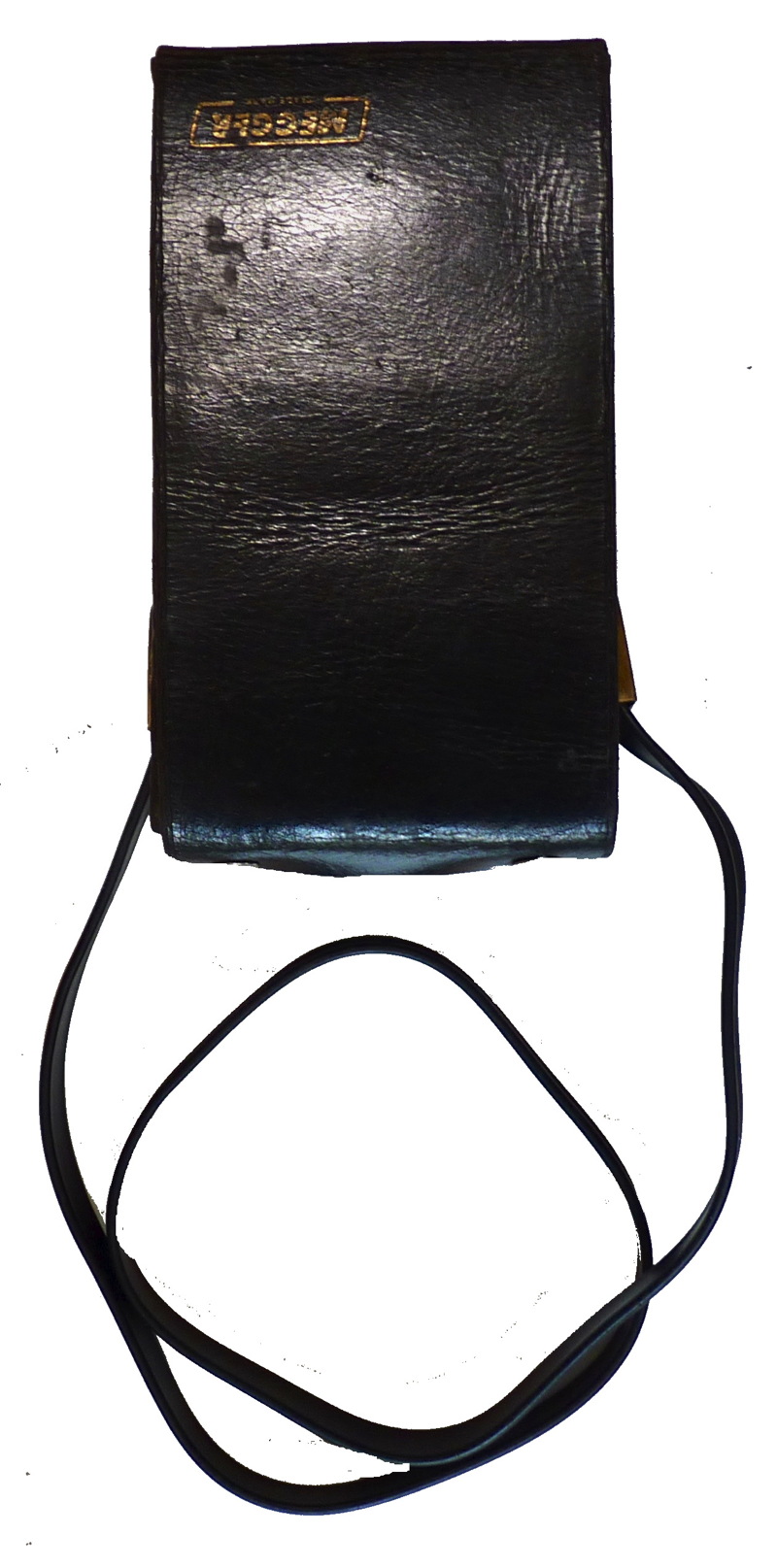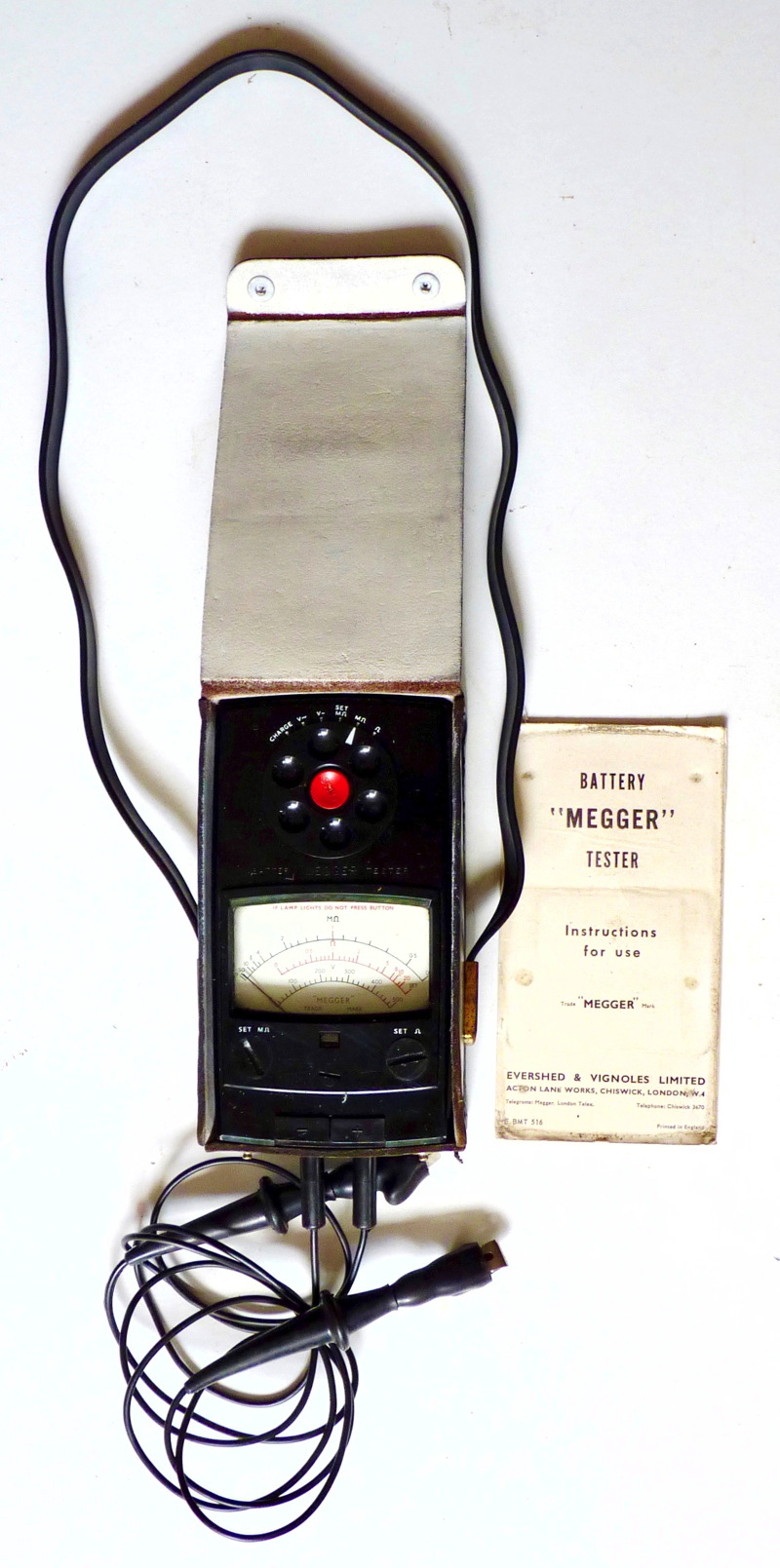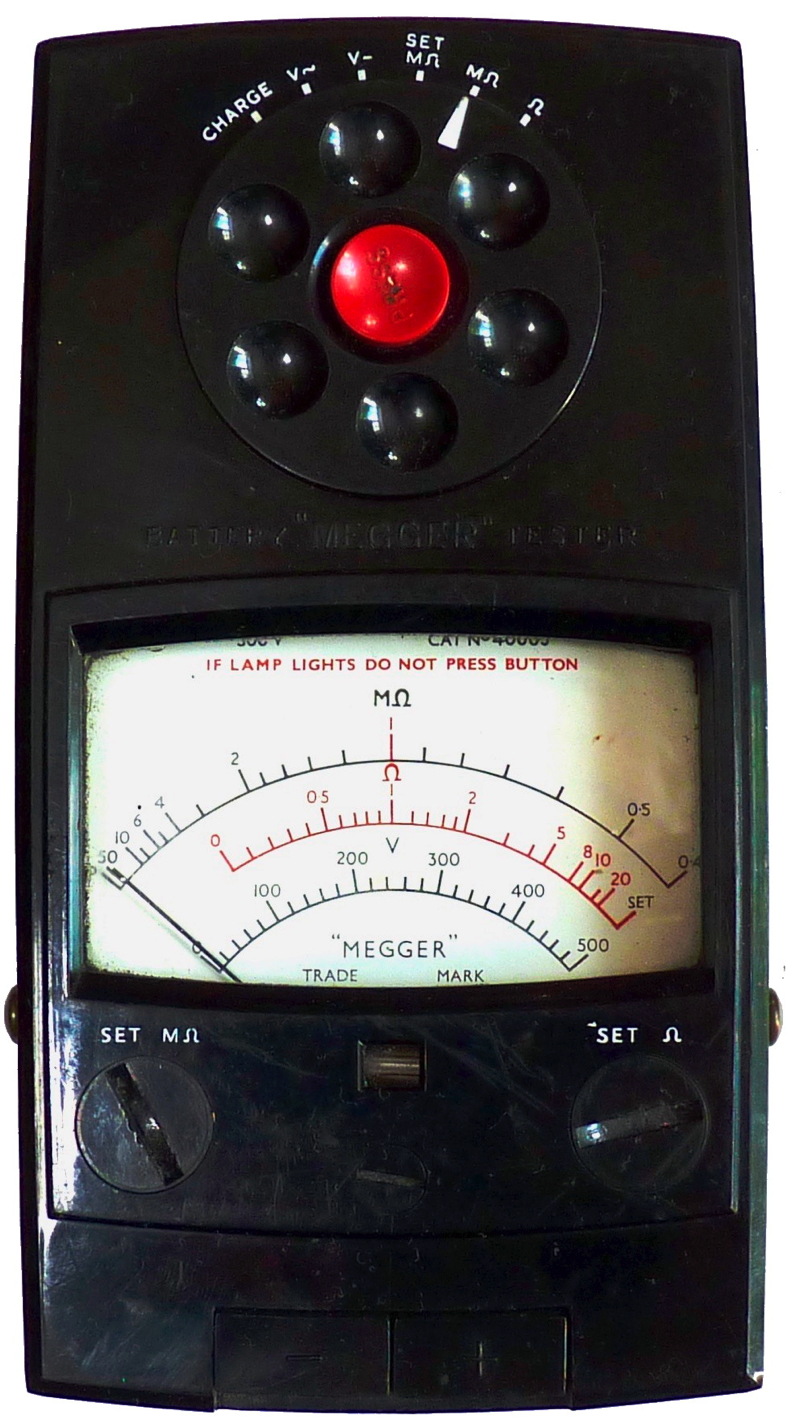
Serial No. 1480450

Evershed and Vignoles Battery "MEGGER" Tester in black plastic case. In need of attention. Date perhaps 1962/3. Evershed and Vignoles ltd, Acton lane, Chiswick, London W4 UK.
I made an offer for this 'battery Megger tester’ (catalogue 4003) on eBay in 2017 and have had a look at it. As expected the battery is long past its best but the meter movement works and the transistor circuitry functions to produce a test voltage. But the meter reads about 5% low and it was not possible to set the megohm or the ohms ranges. I discovered that the meter needed more than 1mA for full scale deflection and that the max voltage generated was 410 volts. It came complete with leather case, test leads, strap and cardboard box containing an instruction leaflet BMT516 and another No.382 outlining other products available at the time.
Mike Niven kindly sent me a copy of an instruction data folder for this range of instruments the 4003, 4004, 4007 and 4008 but sadly no circuit diagram but the information did help me understand how the instrument was intended to work. It seems the 4007 and 4008 are later versions of the 4003 and 4004 instruments including an additional fuse and some circuit modifications but the documentation does not indicate the difference between the 4003 and 4004.
This was not the easiest meter to service but in
the end I found that after cleaning the switch and push button contacts
the continuity tester could be set and after replacing one of the AC83
transistors which came apart when I pulled on its leads to find that
the base connection had never been properly soldered. I used an AC81
which is all I had at the time.
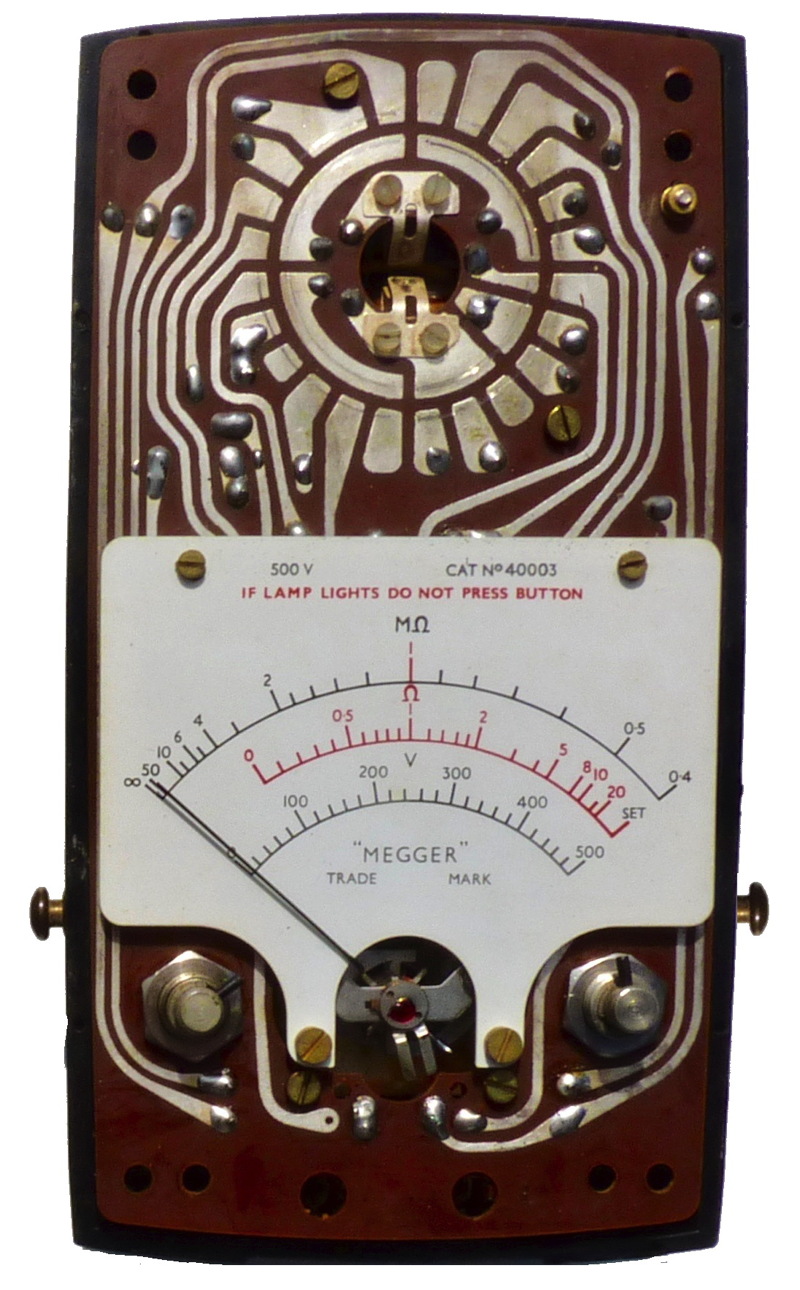

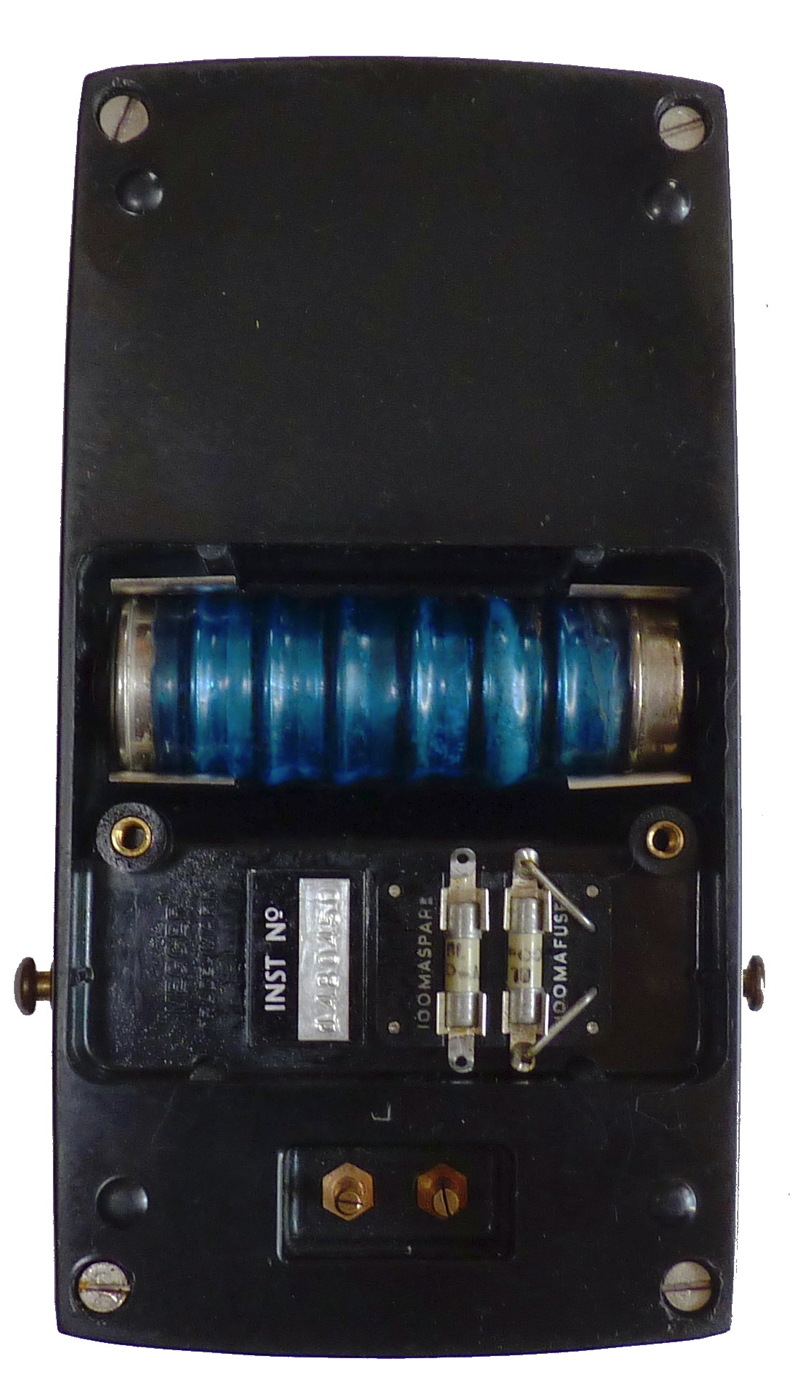
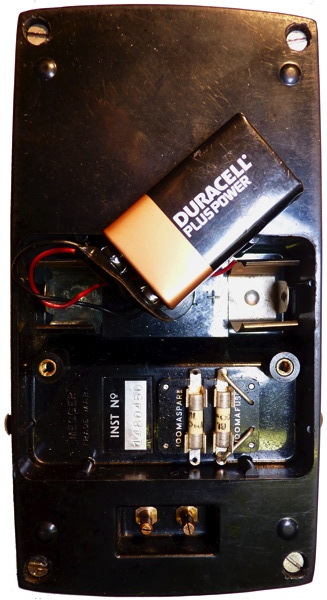
Battery compartment with original
battery and PP3 battery which nicely fits inside
Background
In 1962 Evershed and Vignoles embarked upon a completely new
approach to the further development of their instruments employing the
advantages of transistor technology permitting the use of realistically
low supply voltage requirements which could be supplied with batteries.
This instrument was the first Evershed and Vignoles megger/continuity
tester that did not incorporate the cross coil meter movement that had
been used in all their previous ones. Great claims were made for it,
though I expect Sydney Evershed would have turned in his grave with the
rejection of his favoured method of measuring resistance. It seems that
it was not very popular as very few still seem to exist. The later BM6
and BM7 instruments worked on the same principle.
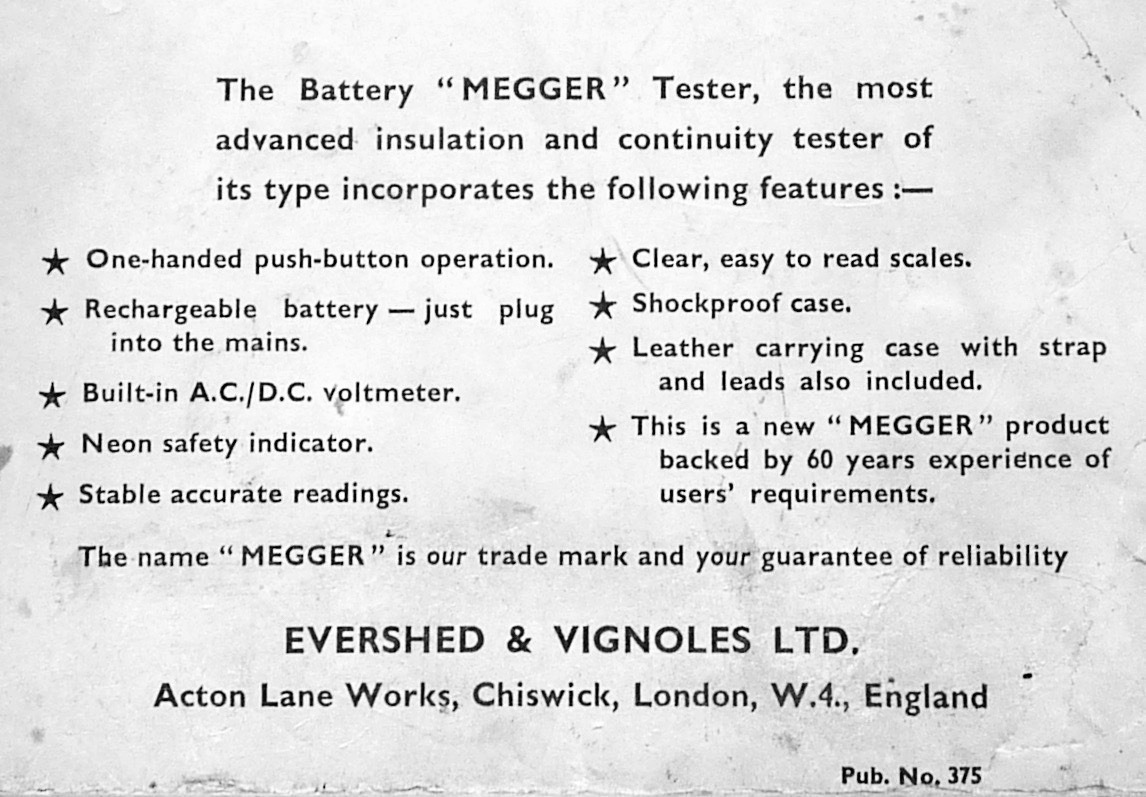
The test voltage of the Battery "MEGGER" Tester is generated
by a
battery driven DC converter. It also utilises a milliammeter type of
movement for the actual resistance measurements in place of the cross
coil movement which one has come to associate with "MEGGER" Testers. By
replacing the more usual hand driven generator with a transistorised
(two AC83 germanium transistors) test voltage source, one hand push
button operation has been achieved.
Moreover, the use of a milliammeter movement has made possible the
inclusion of both a.c. and d.c.voltage measuring facilities covering
the ranges most useful to the electrician.
The power requirements are provided by a rechargeable battery of 7
hermetically sealed high capacity nickel cadmium cells (225mAH) which
is accessible from the base of the instrument so that the instrument is
not dependent on the availability of a suitable battery. A mains
operated charging circuit is included in the instrument which will
recharge the battery when the instrument is not in use. The charging
circuit consists of a surge limiting resistor, series connected with a
capacitor (which determines the charging rate), and small bridge
rectifier. By utilising a capacitor as the voltage dropping component,
power losses and consequent heating are significantly reduced and,
additionally, the circuit inherently ensures that the charging voltage
will always be in excess of the battery voltage. The charging circuit
which is protected by a fuse and is suitable without alteration, for
connection 250 Volt or 110 Volt mains.
In common with the hand operated Series 3 tester the Battery"MEGGER"
Tester includes a continuity range. For DC voltage measurement, the
meter movement is series connected with a high stability resistor and
for AC voltage measurements a bridge rectifier is brought into
operation.
The mechanical construction of the instrument centres around a main
platform which contains most of the wiring in the form of a printed
circuit, and which carries the movement and the scale. The range switch
forms an integral part of the printed circuit but serves for the
selection of the required circuit only. Actual operation requires
depression of the "test"button arranged concentrically with the range
switch. This knob embodies a locking device to facilitate series of
tests or tests of long duration and enables the instrument to be used
without hands. The “set megohm" and "set ohm"potentiometers are
adjusted by means of grooved knobs flush mounted with the top of the
instrument.
You can read much more about the design features in this extract from a E&V
publication produced at the time of the meter's introduction. The
instruction leaflet is here

